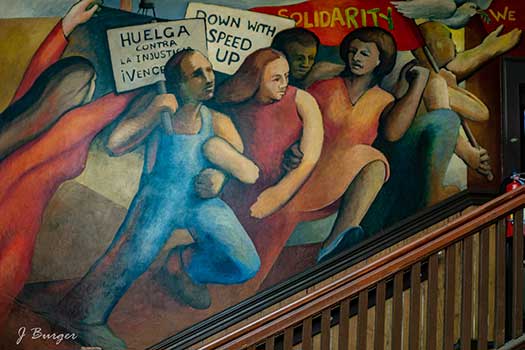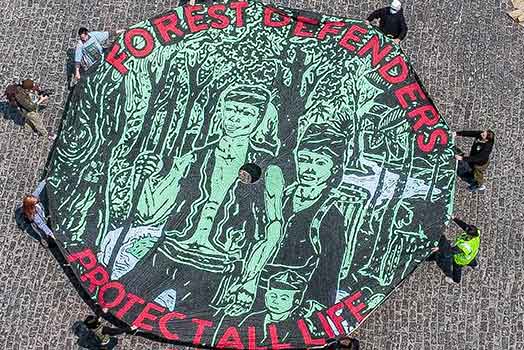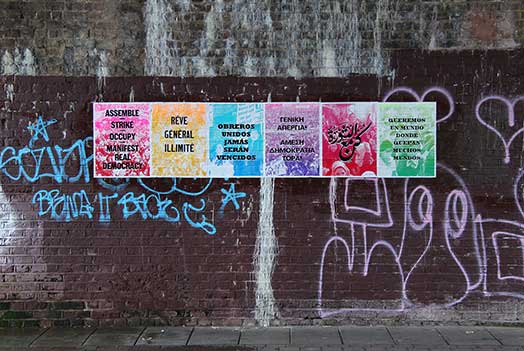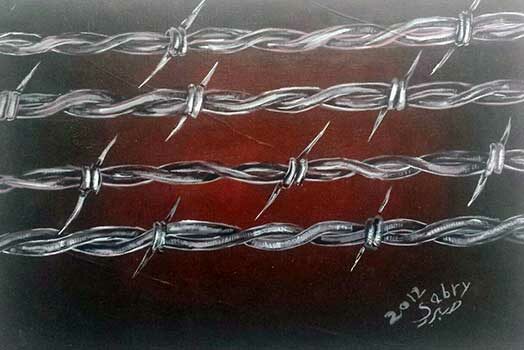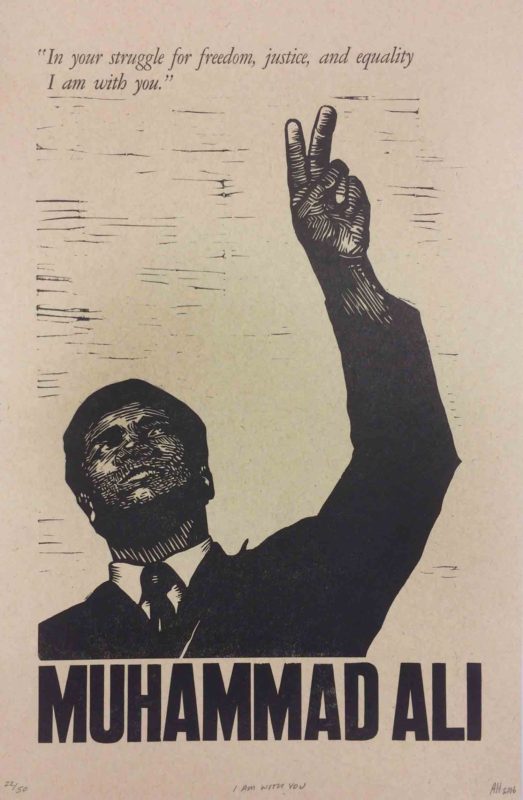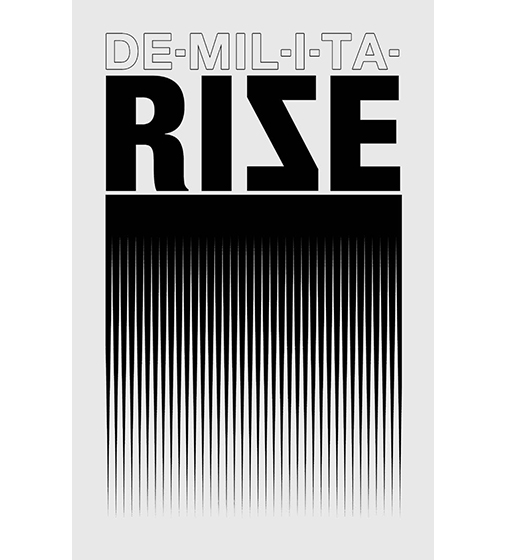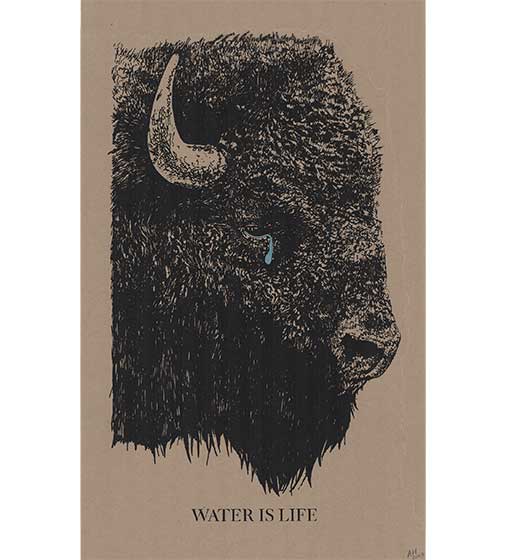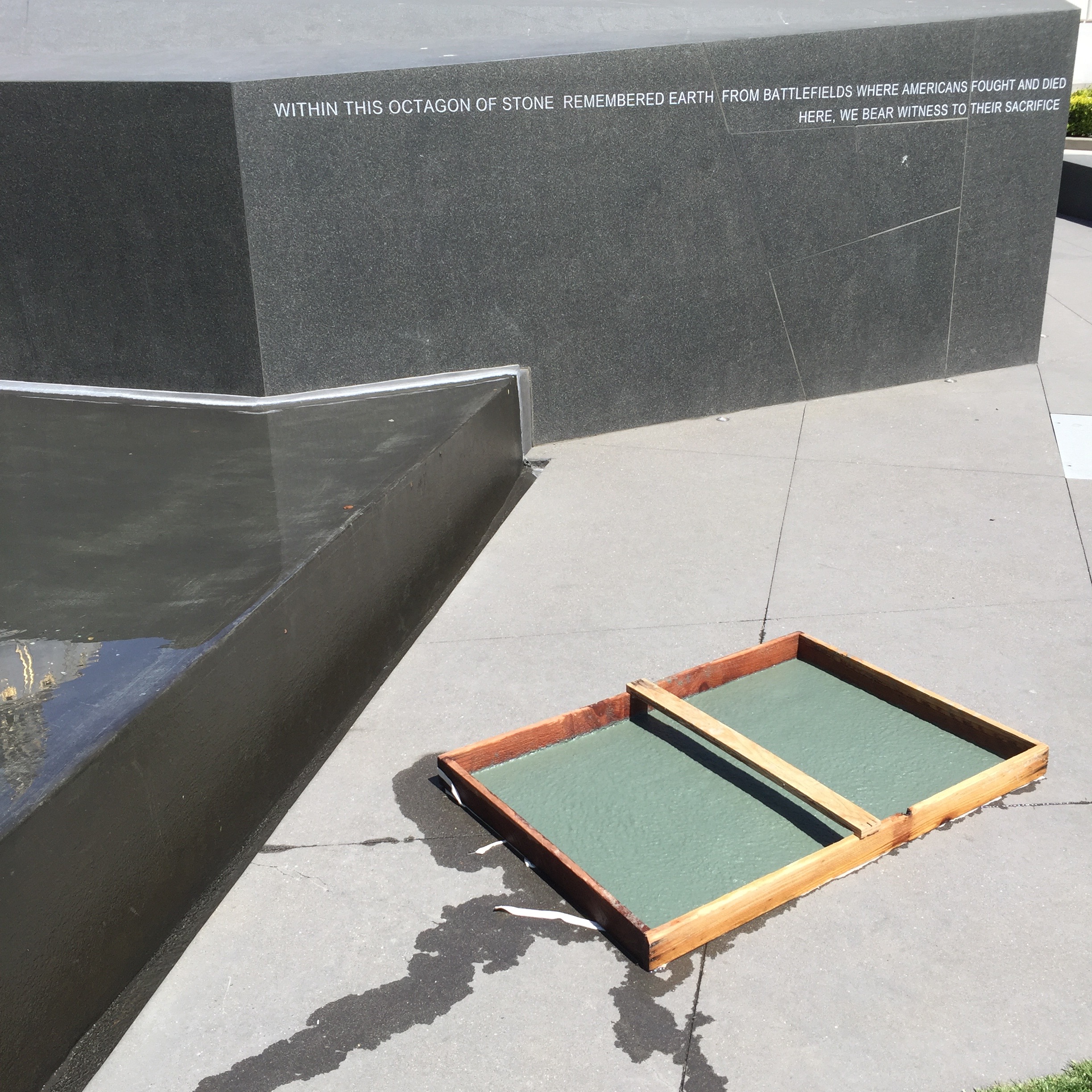
Riparian Sheet created by Drew Cameron at the Veterans Memorial in San Francisco, 2016.
On June 9th, the San Francisco Arts Commission Galleries hosted a one-day public Combat Paper and Warrior Writers workshop at the San Francisco War Memorial Veterans Building called Post Traumatic Growth. During the workshop the public was invited to help transform military uniforms into handmade paper, use writing prompts to explore their personal relationship to the military, and view two print portfolios, Celebrate People’s History: Iraq Veterans Against the War and War is Trauma co-created by the Justseeds.
Drew Cameron, Combat Paper founder, explained the workshop, noting, “Participants use the transformative process of papermaking to reclaim their uniforms as art and express their experiences with the military. Through ongoing participation in the papermaking process, we’re broadening the traditional narrative surrounding the military experience and warfare. The work also generates a much-needed conversation between veterans and civilians regarding our collective responsibilities and shared understanding in war.”
I wanted to follow up with Drew to learn more about these last two points and how he thought the workshop went.
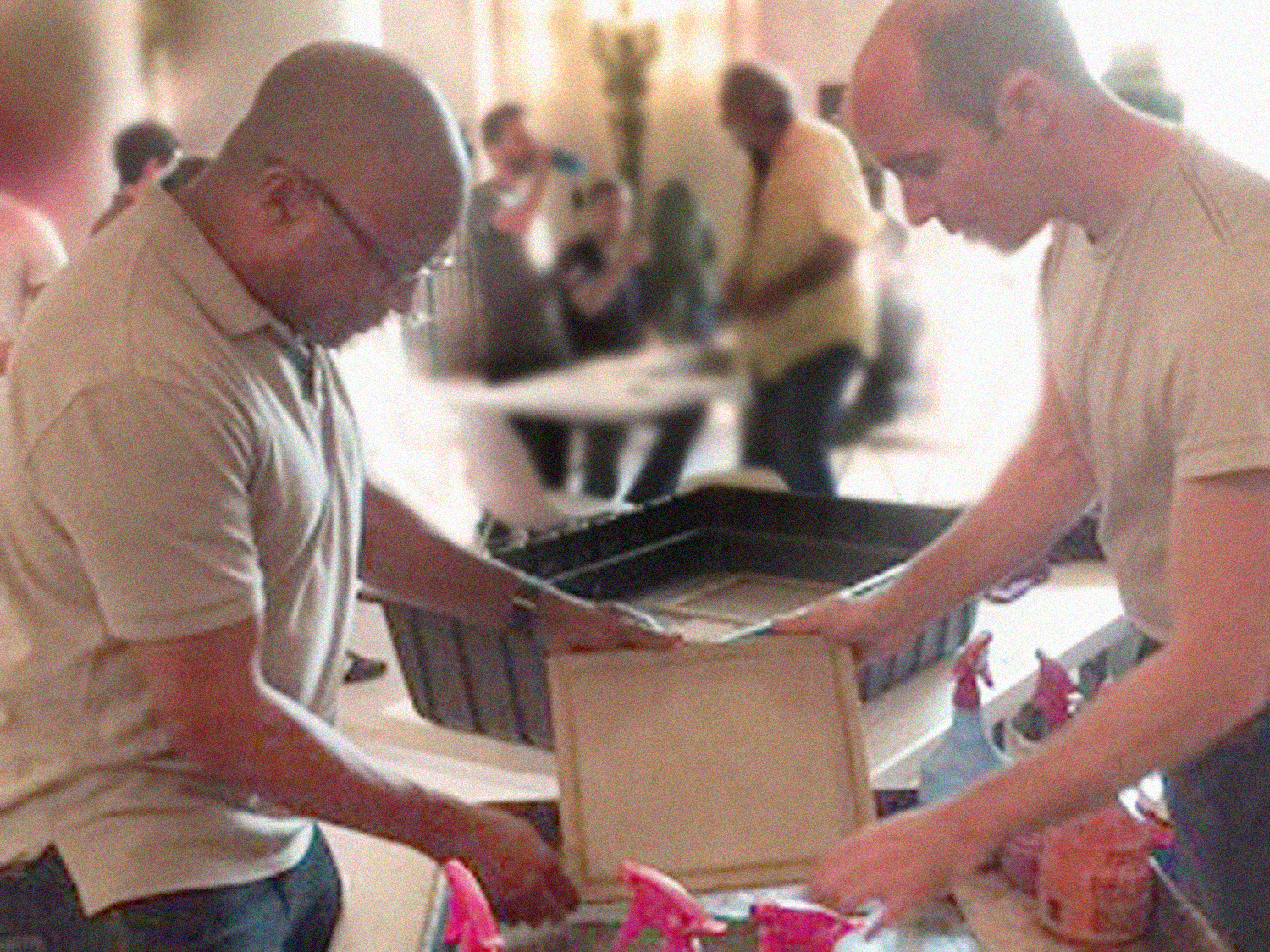
Aaron Hughes (AH): This is the first time Combat Paper has hosted a workshop at the War Memorial Veterans Building. Why was it important to host a workshop specifically in this building?
Drew Cameron (DC): This was an especially unique workshop for me because of the location. The Veterans Building in San Francisco, or War Memorial building was one of the first places I visited when I first moved here trying to connect with other Veterans at one of the local Veterans For Peace meetings and it struck me how impressive their meeting space was. This building was created for veterans shortly after WWI and is located directly across the street from city hall. It’s a massive stone structure with some of the expected war shrine emblems, a good number of the veteran service organizations, and the San Francisco Arts Commission. There is just a lot of things to dig into in that building let alone making paper from uniforms inside of it.
I brought uniforms with me from the American wars in Vietnam, Iraq, and Afghanistan to cut apart and begin the process of papermaking, it seemed like a good place to start.
AH: In your workshop description you mention an intention to broaden the traditional narrative surrounding the military experience. What do you mean by that?
DC: One of the first things I started hearing when I began to become politically active against the war and later with Combat Paper traveling all over the country was the sentiment of “you don’t know unless you’ve been there” or “I can’t imagine what it was like” and I was both perplexed and disheartened by the sentiment. I believe in human compassion and empathy, and at its best, perhaps, an art process about the military experience can become a place that evokes such a response.
I’m not interested in adding to the military fixation we have in our society, I’d like to see it debunked whenever possible.
AH: How does that military fixation relate to the veteran and civilian divide? Clearly it is important for you that both civilians and veterans are involved with the workshops. What are you hoping they take away from that conversation?
DC: That we are all related to the wars and militarism in more ways than we think, and that our collective stories, insights and energies are powerful.
AH: Can you say a bit more about how civilians and veterans are connected to wars and militarism?
DC: Perhaps veteran and non-veteran is a better way of saying it, because I feel like all of us are civilians really and in the same sense we are all veterans. Haven’t we all been blasted by the endless wars most of our adult lives? Isn’t it the same as the generation before us and the ones before them?
As far as our responsibilities as a citizen, civilian, human, etc … Yes, we should feel as though we are both a part of it and can actively engage in ways to change the excessive militarism perpetuated by our government.
If I can hope to make anything more than sheets of paper made from uniforms it is to foster an excitement in other people to do something with that paper. It is paper after all, sort of a blank canvas.
AH: Do you feel like the workshop was successful at broadening the narrative around the military experience and starting a conversation about how everyone is connected to war and militarism?
DC: For me, every time we make paper from uniforms it is successful. Perhaps, I’ve set my level of success to be a bit impenetrable but for as long as people want to come to workshops, host workshops, Combat Paper will be there to facilitate. However, people want to participate is theirs to determine, it is up to them what the intentions are. I’m often inspired by who decides to be a part of this process, what their materials are, where they come from, and why they want to create paper out of uniforms.
AH: During the workshop at the War Memorial Veterans Building you shared the space with Warrior Writers and two Justseeds print portfolios. What does it mean for you to share a space with these other projects?
DC: These projects all have a shared story and got into regularly working together about a decade ago. Sharing the space is like being at family dinner—it just sort of makes sense and reminds us that we are all still in this together. Very reaffirming.
AH: In closing, can you say a bit more about why it was significant to host a Combat Paper workshop in the “trophy room” at the San Francisco War Memorial Veterans Building?
DC: Yes, in that room, in a reliquary made of stone, there are soils from various battlefields that our country’s military has been directly a part of. There is a similar collection in the new memorial outside. These memorials are a physical gathering of these places. They just added soils from Iraq and Afghanistan earlier this year.
To call it a trophy room is bizarre and perverse, but it is an old idea, it is dated language. To imagine that all of that suffering and loss of life is somehow decorative … I suppose there are different ways of remembering significant events. Perhaps, by making paper from uniforms in that space we can conjure up a different meaning of that space, one of action, and one of new ways of remembering or new ways of relating.
War in our time isn’t over, even though most people would like to see it abolished, so we find ways to work towards that end.
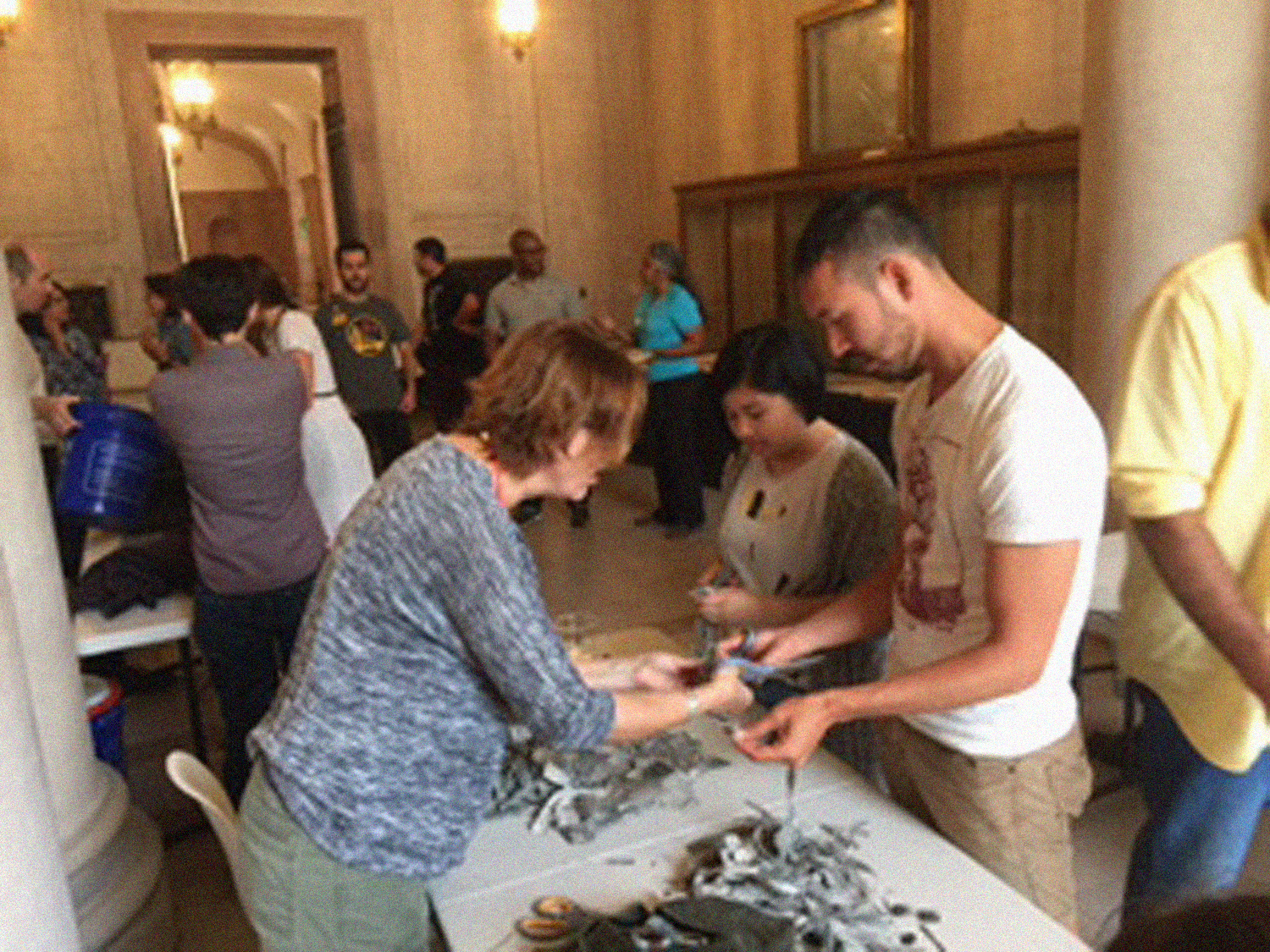
Workshop Photographs by Janice Tong
Memorial Photograph by Drew Cameron
Drew Cameron is a paper artist, trained forester and former army soldier living and working in San Francisco.
Combat Paper, is a group of veterans, artists and activists who have been facilitating papermaking workshops across the country with their mobile project. Bring a uniform to donate, or use those supplied by the group. Workshops are open and accessible to all.
You can buy a collaborative Combat Paper pulp print by Drew Cameron and Josh MacPhee on the Justseeds site here.
Links:
- Combat Paper: http://www.combatpaper.org/
- Warrior Writers: http://www.warriorwriters.org/
- Iraq Veterans Against the War: http://www.ivaw.org/
- Workshop: http://www.sfartscommission.org/gallery/2016/post-traumatic-growth-program-1-combat-paper-warrior-writers-and-justseeds-artist-collective/
